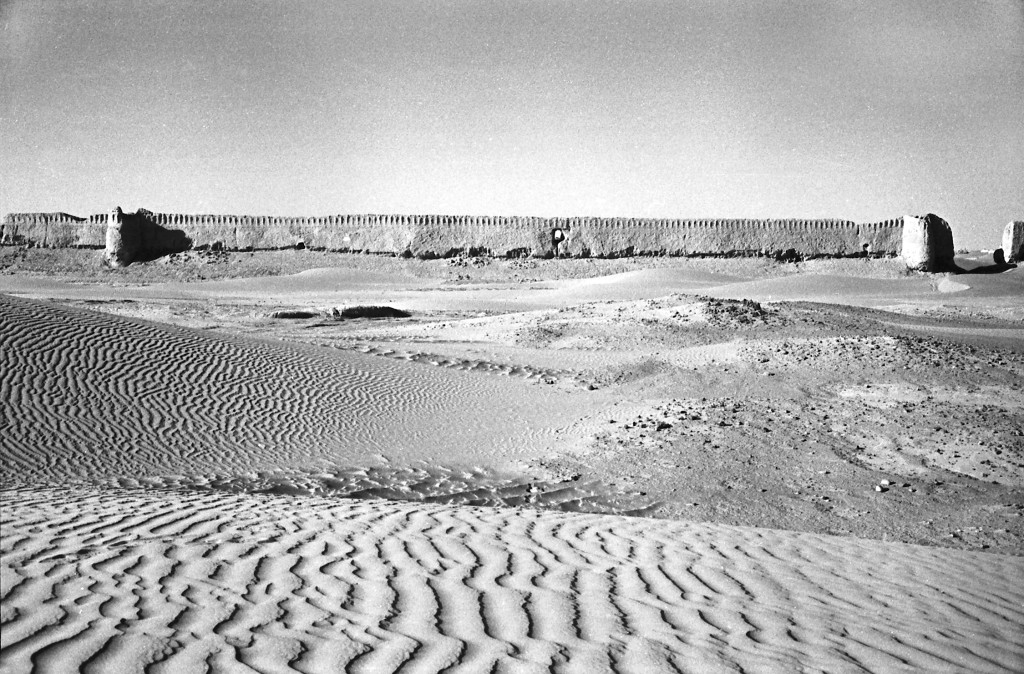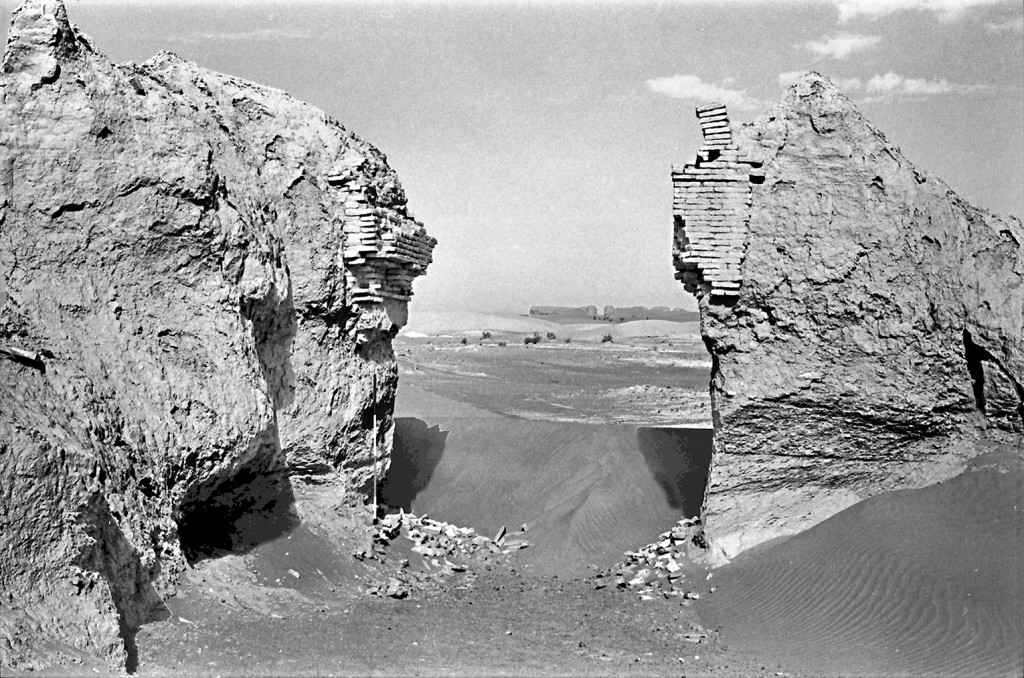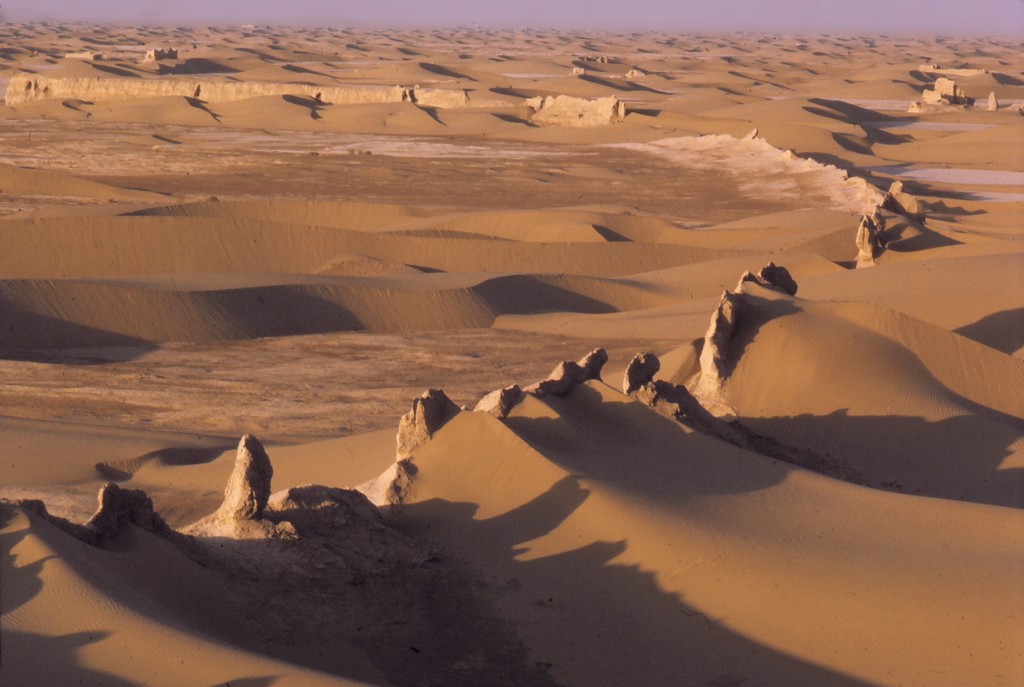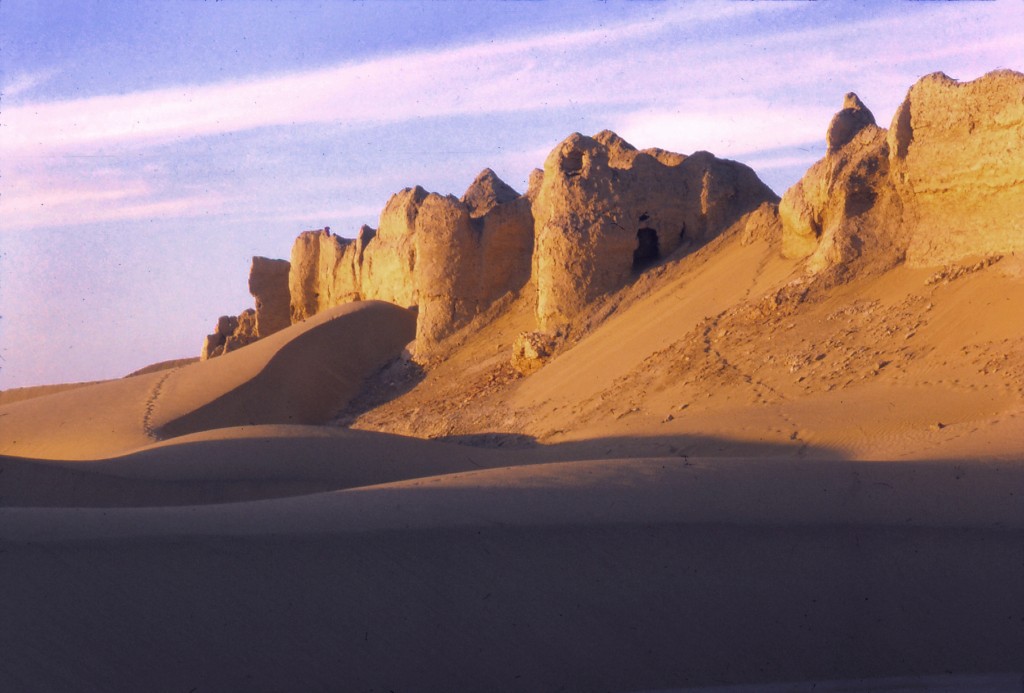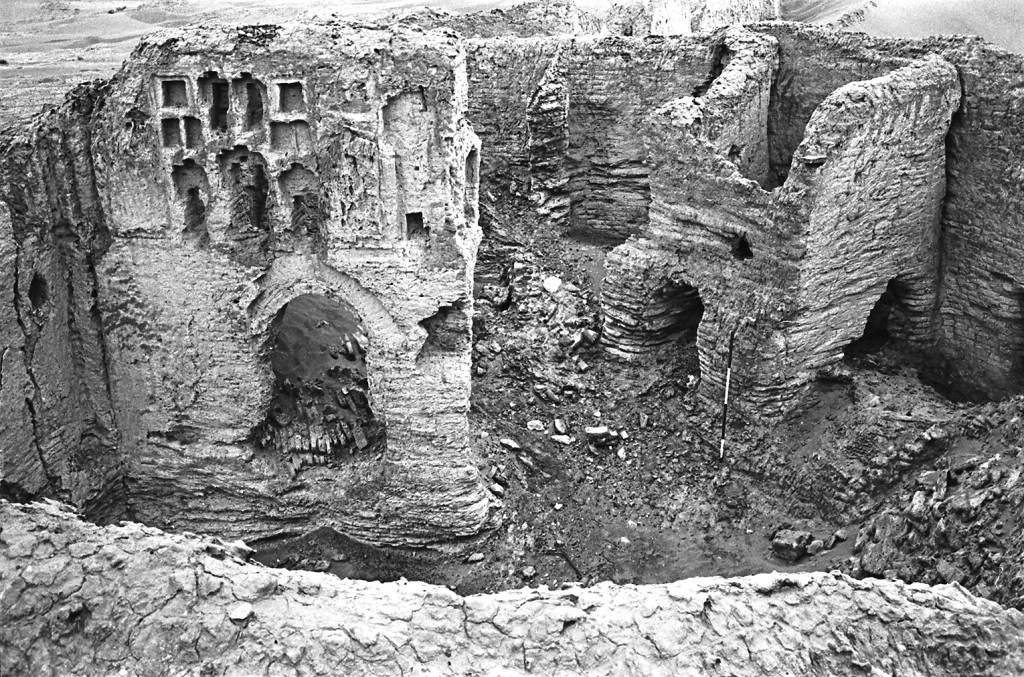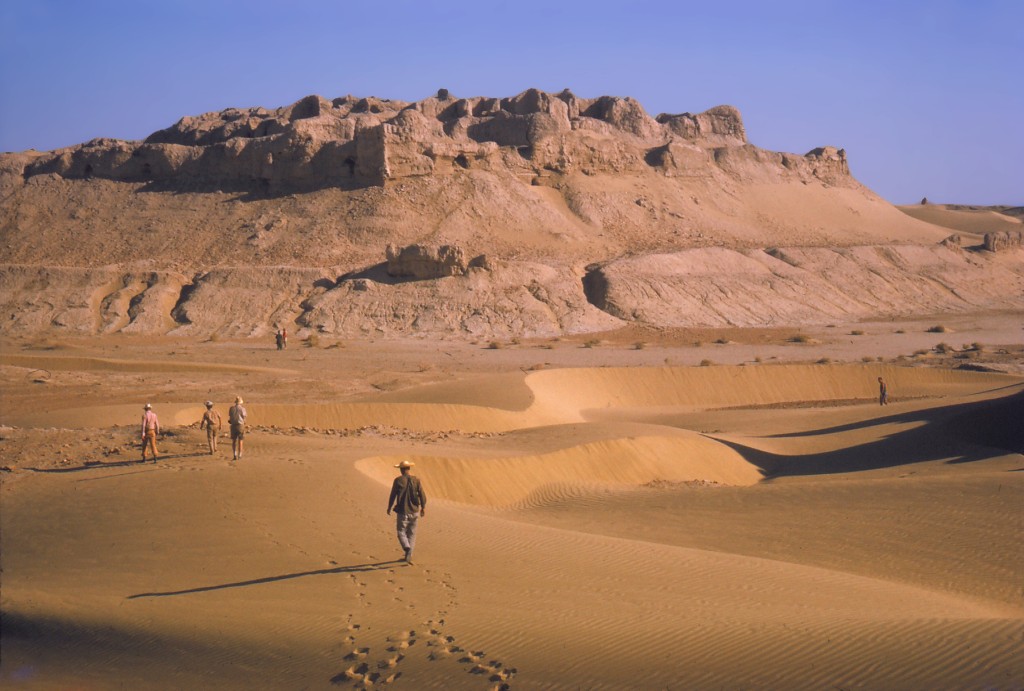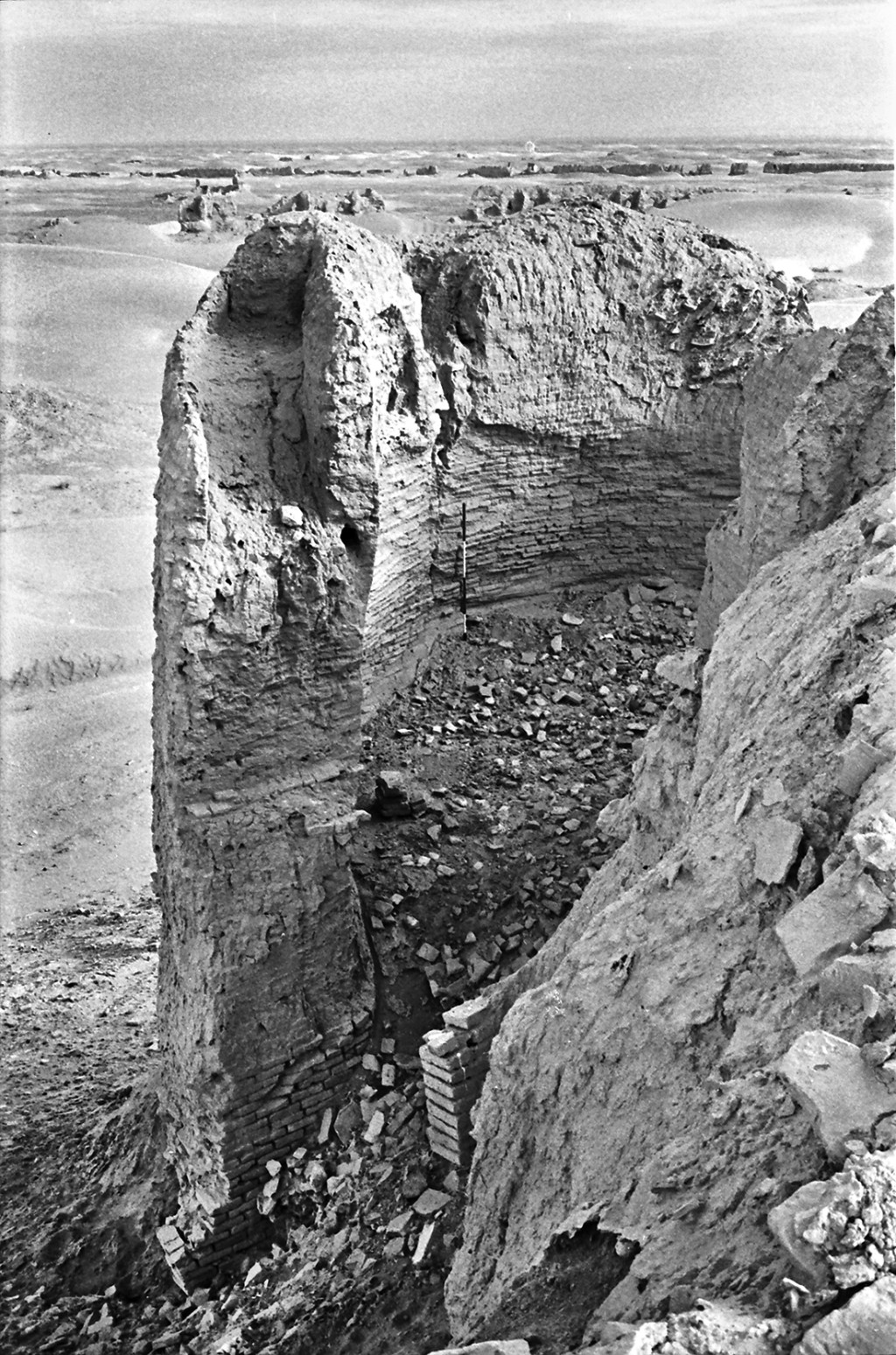Shahr-i Gholghola: Wall Systems
Latitude: 30.57893266 Longitude: 62.09031513
Wall Systems. The defensive nature of the site is apparent from the existence of five different wall systems and three moats protecting the Citadel Palace at the center. Medieval documents describing the Sistan fortress of Taq match what we found on the ground quite closely.
The Outer Wall, over a km in length on each side, is not regular in shape, with one wall convex, another concave, and the south and east sections a continuous curve. The wall sits on a platform to raise it above the level of the plain. Walls still stand 10 m high in some places and, in the best-preserved section along the east, show corbelled decorations at the top that are found elsewhere during the Ghaznavid period occupation of the site. Four gates pierce the 4 m wide wall that also supports at least 25 semicircular defensive towers. A moat 30-40 m wide surrounds this wall system. Canals dug through the wall and later buildings constructed atop its remains suggests this wall went out of use before the 15th century.
Inside the Outer Wall is the Circular Wall, the most imposing of the site. It is over 2 km long and surrounds an oblong compound 460 x 530 m in size. The wall currently stands 1-2 m in width and rises as high as 8 m, but sits on a broad, tall platform as much as 20 m wide. The Circular Wall is dotted with 56 exterior towers, and is surrounded by a moat 25-30 m wide and 3 m deep. Entrance through this wall is only possible through heavily defended gates on the north and south sides over the moat.
The Citadel inside the Circular Wall compound is surrounded by a defensive wall at its base and another at the summit, surrounded by a third moat 22 m wide and 4-4.5 m in depth. A single gate on the north side of each wall allows entrance to the interior. The Palace on the summit of the Citadel is surrounded by yet another defensive wall.
